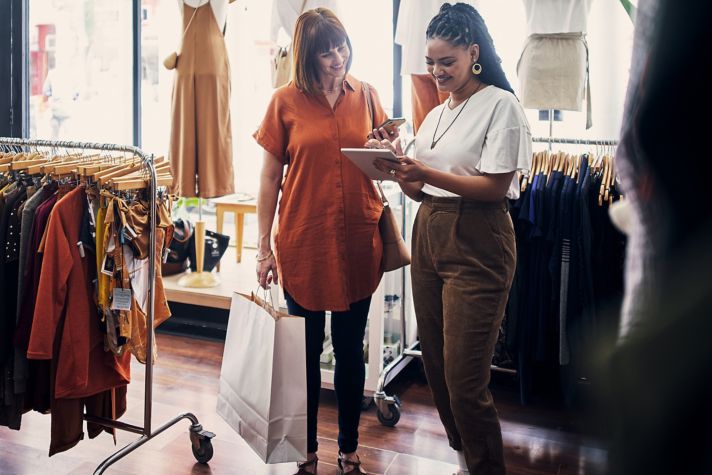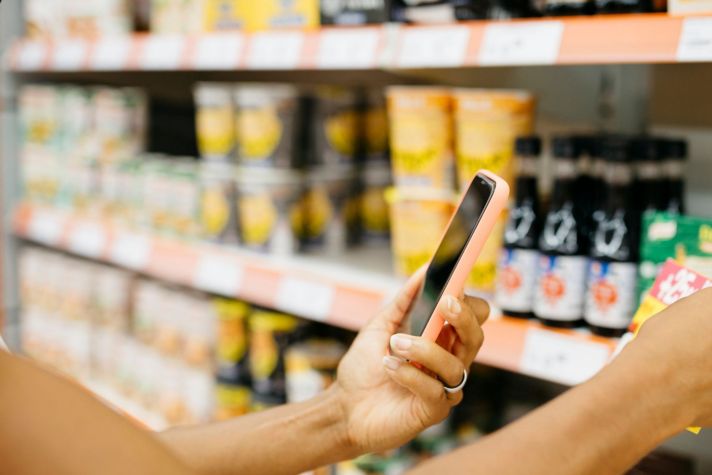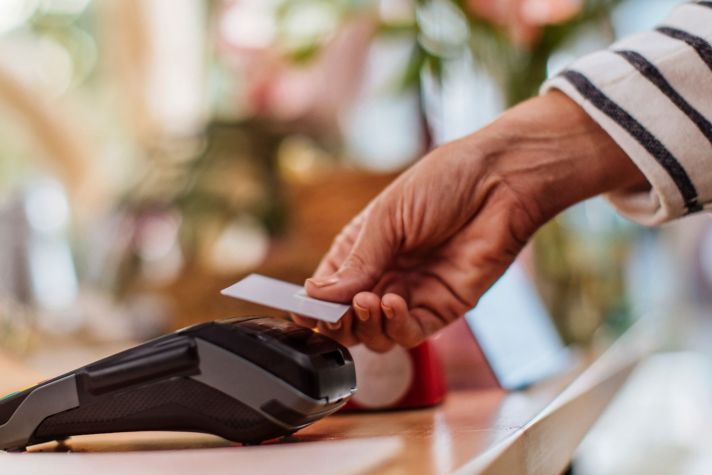-
 Global
Global-
Africa
-
Asia Pacific
-
Europe
-
Latin America
-
Middle East
-
North America
- |
- BUSINESSES
- |
- Contact
- |
-
 Global
Global-
Africa
-
Asia Pacific
-
Europe
-
Latin America
-
Middle East
-
North America
- |
- BUSINESSES
- |
- Contact
- |
You are browsing the product catalog for
You are viewing the overview and resources for
- News
- 3 Ways Technology is Making Shopping More Convenient
3 Ways Technology is Making Shopping More Convenient
Now more than ever, we expect shopping to be easy and instantaneous. Here’s how retailers are innovating to deliver top-notch customer experiences.
Whether you’re filling your cart with groceries, scrolling online for furniture or exchanging a gift, nothing can dampen the shopping experience like an out-of-stock item, a complicated return process or a long line.
Retailers are hoping those experiences will become few and far between. Here’s how shopping is expected to evolve and become more convenient this year and in the future.
Seamless Store Experiences
Karen Bomber, our retail strategy and technology expert with more than two decades in the industry, said that consumers “expect shopping to be convenient and instantaneous.”
Retailers are adding technology to their stores to make shopping in-person a breeze.
For example, advancements like contactless and self-checkouts that auto-scan items using radio-frequency identification (RFID) embedded on product labels or tags are becoming more prevalent in brick-and-mortar locations.
While brick-and-mortar stores are no longer consumers’ default method for shopping – 72% of consumers say they still rely on stores as part of their primary buying method, according to a 2021 survey conducted by the IBM Institute for Business Value in association with the National Retail Federation.
It’s why retailers are also using technology in stores to give consumers a personal experience – such as beauty retailers incorporating augmented and virtual reality technology to show shoppers what a hair color or lip product may look like on them before they commit.
Easier Returns
The consumer experience isn’t just about how easy – or enjoyable – it is to make a purchase. It’s also about being able to make a return seamlessly.
One of the biggest challenges for retailers in the COVID-19 pandemic is that return rates have increased, Bomber said.
In 2020, online returns more than doubled compared to the previous year, according to a 2021 report from the National Retail Federation and Appriss Retail. On average, returned items account for more than $400 billion in lost sales for US retailers, according to a 2021 report from the National Retail Federation and Appriss Retail.
Returning an unwanted purchase used to put strain on the consumer, but technology is lightening the load compared to two years ago, Bomber said.
“Gone are the days where you have to take your items to a post office,” Bomber said. “Shoppers can print out their own label or retailers send one in the box, and it gets picked up.”
Shoppers may also see more opportunities to return items they bought from ecommerce retailers at drop-off locations in stores. Technology such as QR codes makes it convenient for consumers to scan and drop off their items for return – and retailers see an opportunity for those shoppers to make another purchase while in the store.
Hybrid Grocery Shopping
In the past two years, supermarkets have made significant improvements to their ecommerce experiences, Bomber said.
These upgrades have helped in-store shoppers increase efficiency and accuracy when fulfilling orders and giving consumers more ways to communicate with their in-store shopper.
Improved online grocery-shopping technology has made it easier for consumers to stock their fridges without waiting in lines. The National Retail Federation predicts that online purchases will account for 20% of sales in the grocery business within the next five years.
The future of grocery shopping will combine consumers’ expectation for convenience and desire to have control over some items in their carts.
“What’s next is a blend between self-selection and store selection,” Bomber said.
Consumers will be more likely to let stores pick their non-perishable items, she added, but many are heading back into stores to pick their own produce.
“Retailers know that if they can get people in stores to pick their produce, dairy items or other products they want to hand-select, they’ll also make an impulse buy,” Bomber said.
Copyright © 2025 Honeywell International Inc.




